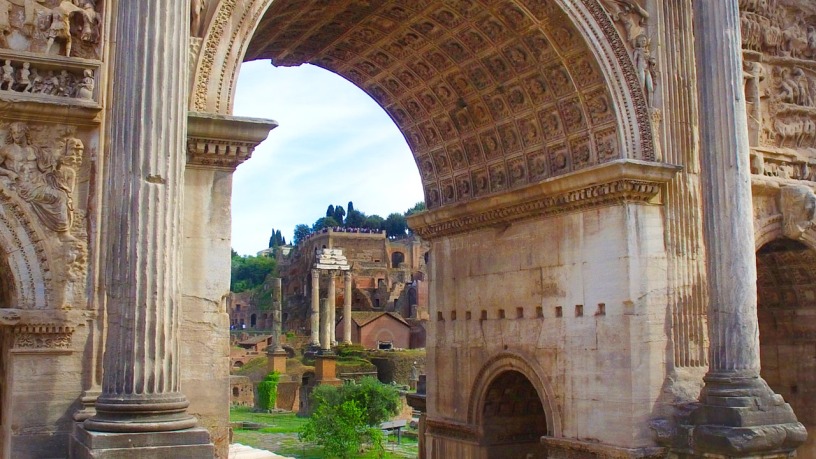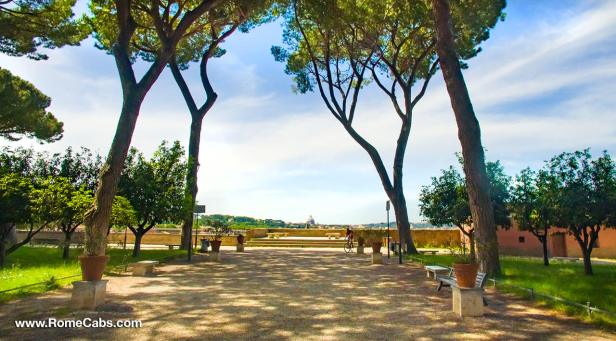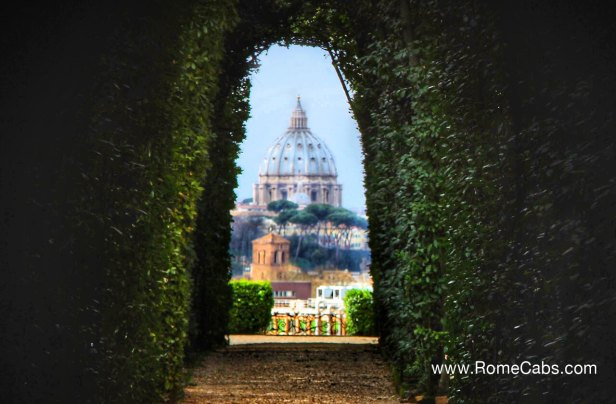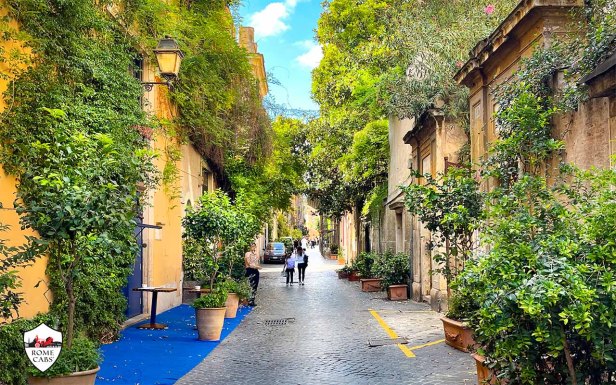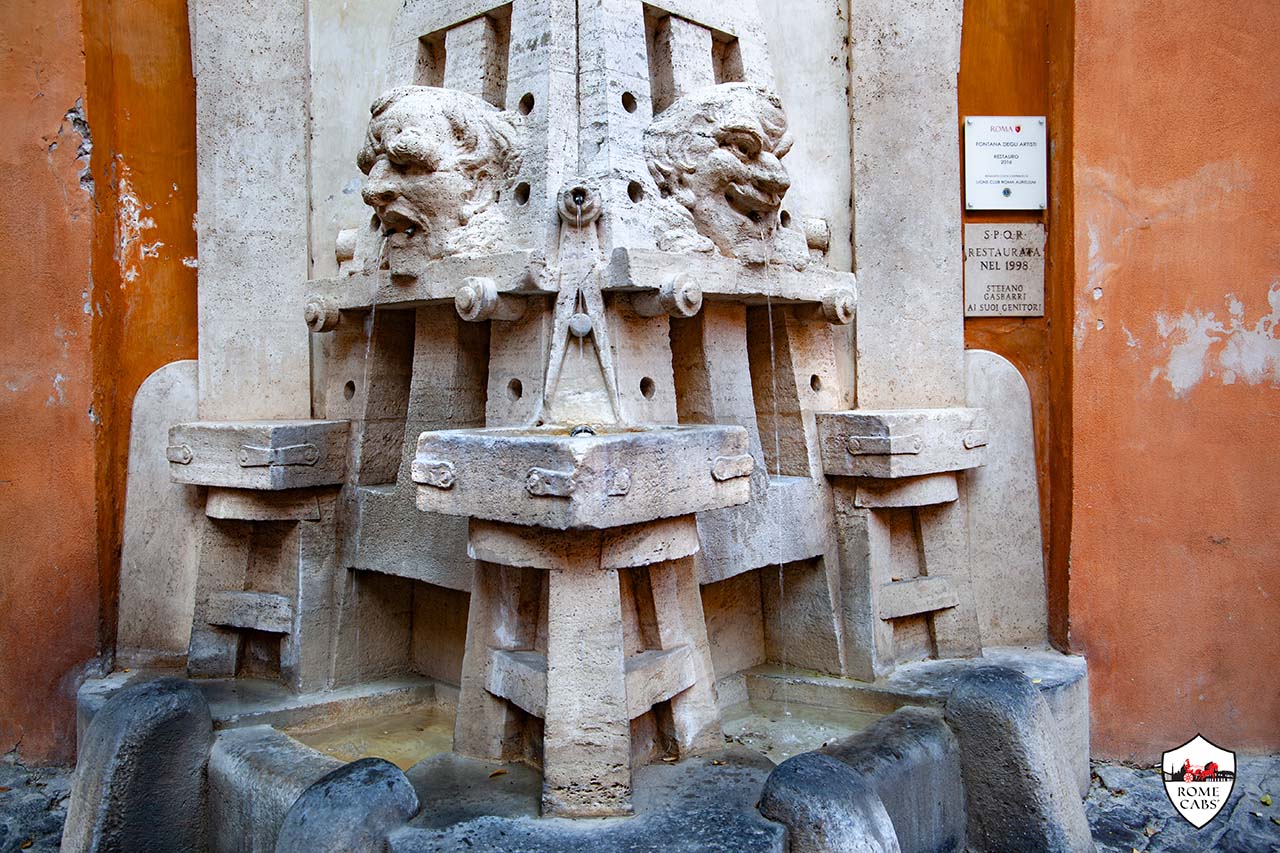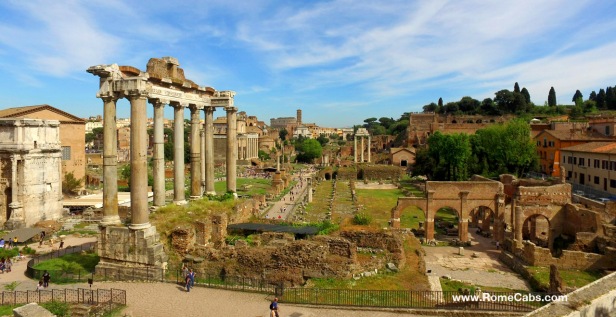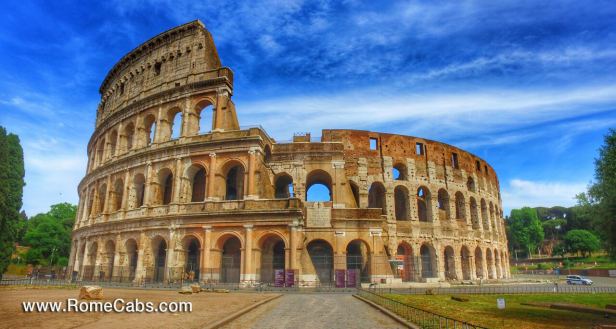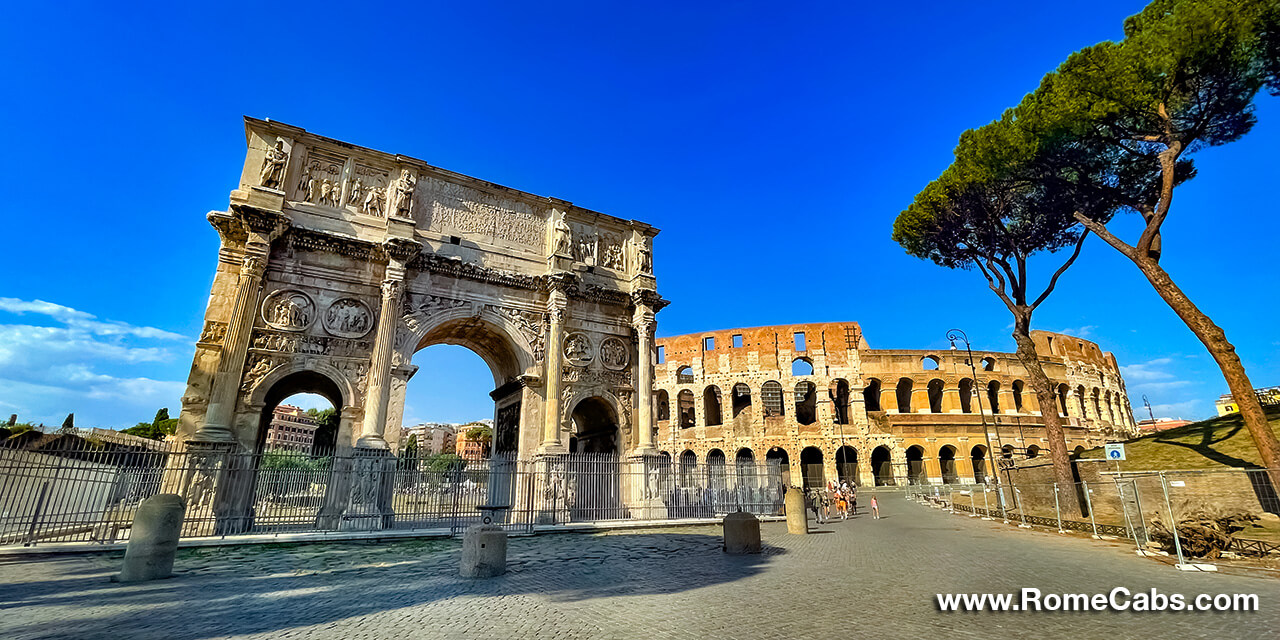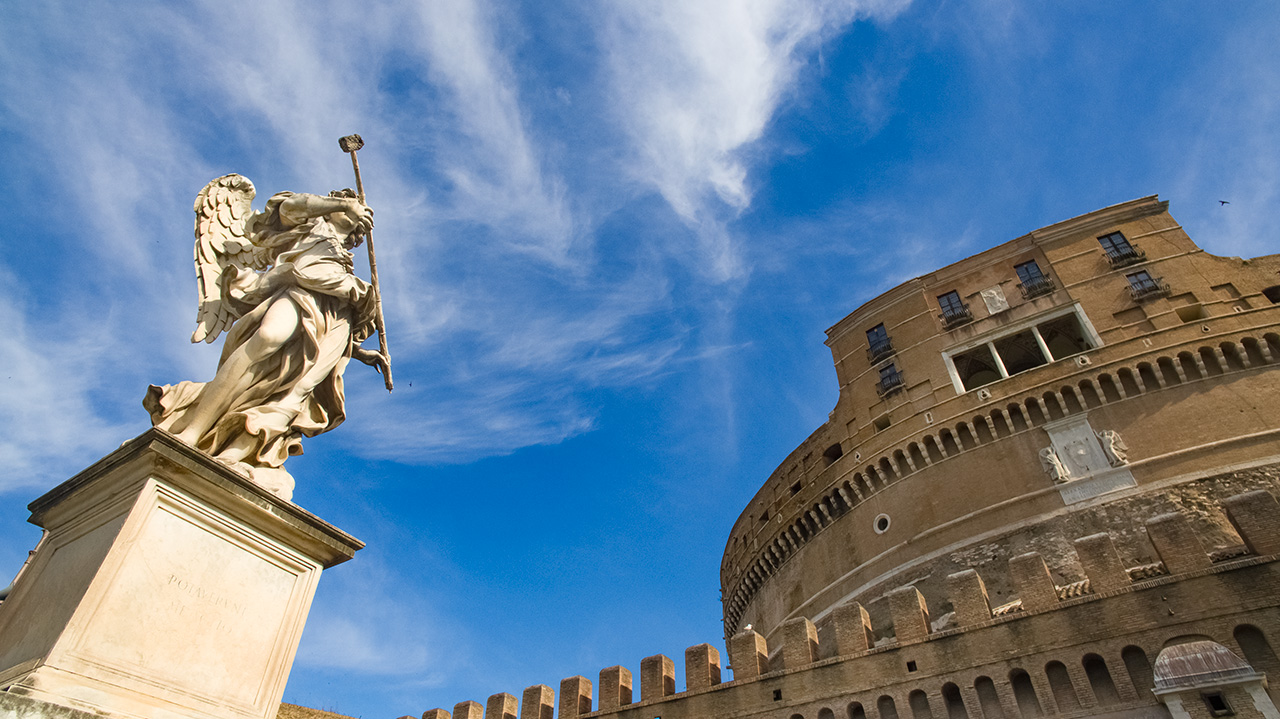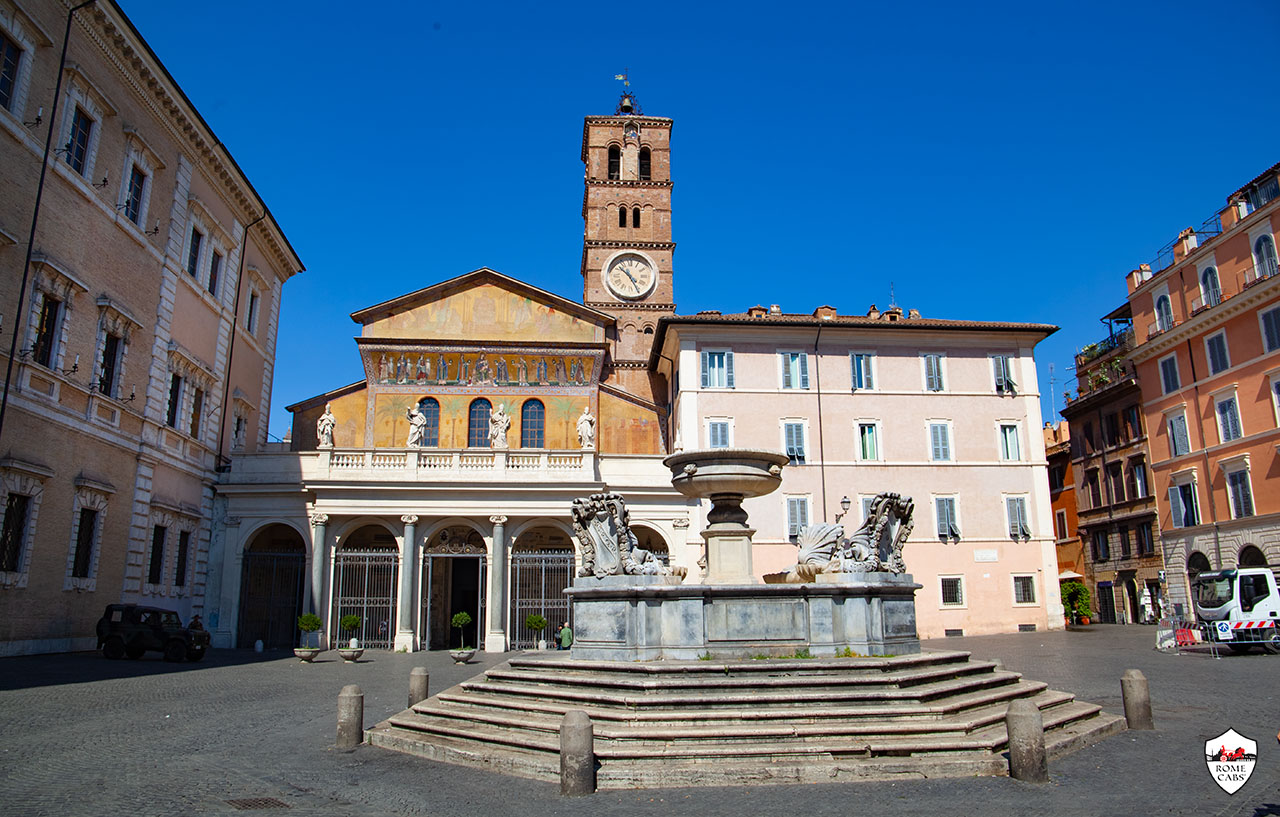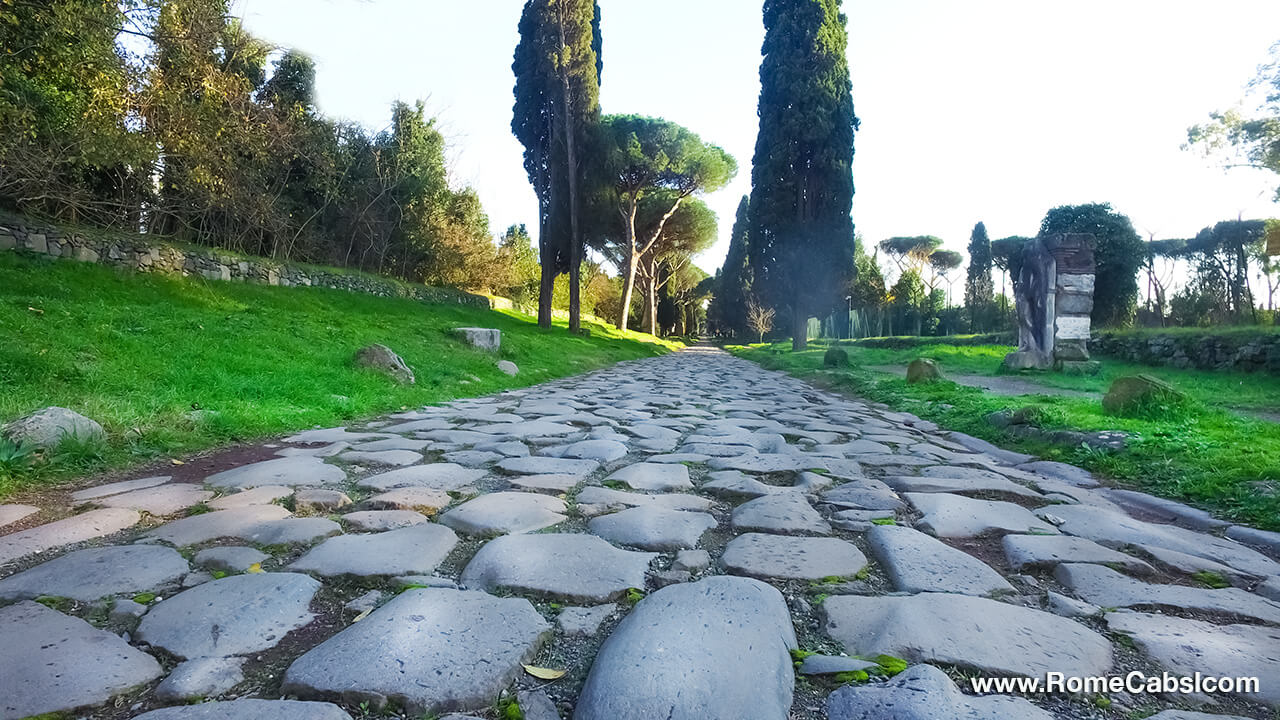Buongiorno and welcome to RomeCabs Rome Travel blog! Rome is a photographer’s paradise, with its iconic landmarks, hidden corners, and stunning vistas that provide countless opportunities to capture the Eternal City’s charm. While many of these spots can be reached on foot, having the convenience of a private Rome tour by car with RomeCabs allows you to visit some of the most photogenic locations in Rome without the hassle of navigating public transportation or enduring long walks with heavy photography equipment.
Here’s a selection of top spots where you can capture Rome’s timeless beauty, many of which are included in RomeCabs Rome tours by car.
1. Janiculum Hill (Gianicolo)
For panoramic views of Rome’s historic skyline, Janiculum Hill (Gianicolo) is an unmissable destination. Located just west of the Tiber River, this elevated spot offers one of the most stunning vistas in the city. From here, you can photograph iconic landmarks such as St. Peter’s Basilica, the sprawling rooftops of Rome, and the city’s ancient domes and bell towers stretching out in every direction. The view is particularly breathtaking at sunset when the sky casts vibrant hues over the city, illuminating the beauty of Rome’s skyline.
Historically, Janiculum Hill is significant not only for its views but also as a place of great importance in Roman history. It was the site of several pivotal events, including the Giubileo of 1550, during which Pope Julius III ordered the construction of the Fontana dell’Acqua Paola—a stunning Baroque fountain that still graces the hill today. The hill also played a key role in the Roman Republic’s defense in 1849 during the siege by French forces, and visitors can still see remnants of that turbulent time.
Today, it offers a peaceful escape from the bustling city below, with cypress trees lining the paths and charming monuments like the Monument to Garibaldi, dedicated to the Italian unification hero. Whether you’re capturing the golden glow of the sunset or the historical landmarks in the distance, Janiculum Hill provides an unforgettable perspective of Rome’s timeless charm.
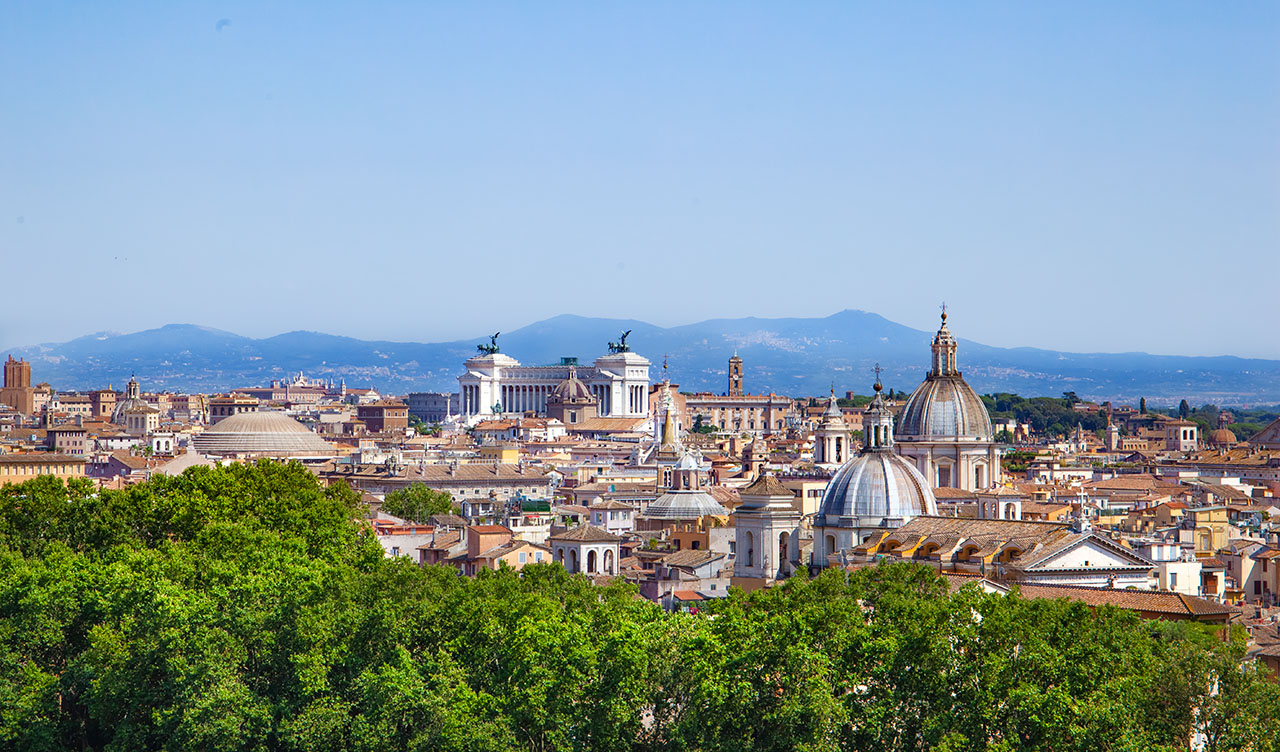
2. Pincio Terrace at Villa Borghese
The Pincio Terrace, located within the elegant Villa Borghese Gardens, is one of Rome’s most romantic and picturesque spots. Perched above Piazza del Popolo, this scenic viewpoint offers sweeping views of the city, including domes of some of Rome’s top churches. The Pincio has long been a popular destination for both locals and visitors seeking a moment of tranquility while enjoying one of the most captivating panoramas in Rome.
Historically, the terrace was part of the Borghese family’s estate in the 17th century, and its design reflects the family’s grandeur and taste. Today, the space is a public park, offering visitors the chance to stroll through lush, manicured gardens and catch glimpses of classical sculptures and fountains along the way.
For photographers, this spot is particularly enchanting during golden hour, when the setting sun casts a warm, golden glow over the city, highlighting the intricate details of Roman architecture and the sprawling urban landscape below. Pair your visit with a leisurely walk through the surrounding Villa Borghese Gardens, where you can capture lush greenery, serene lakes, and classical statues—all within easy reach of the terrace. The combination of historical richness and natural beauty makes this a must-visit stop on your photographic journey through Rome.
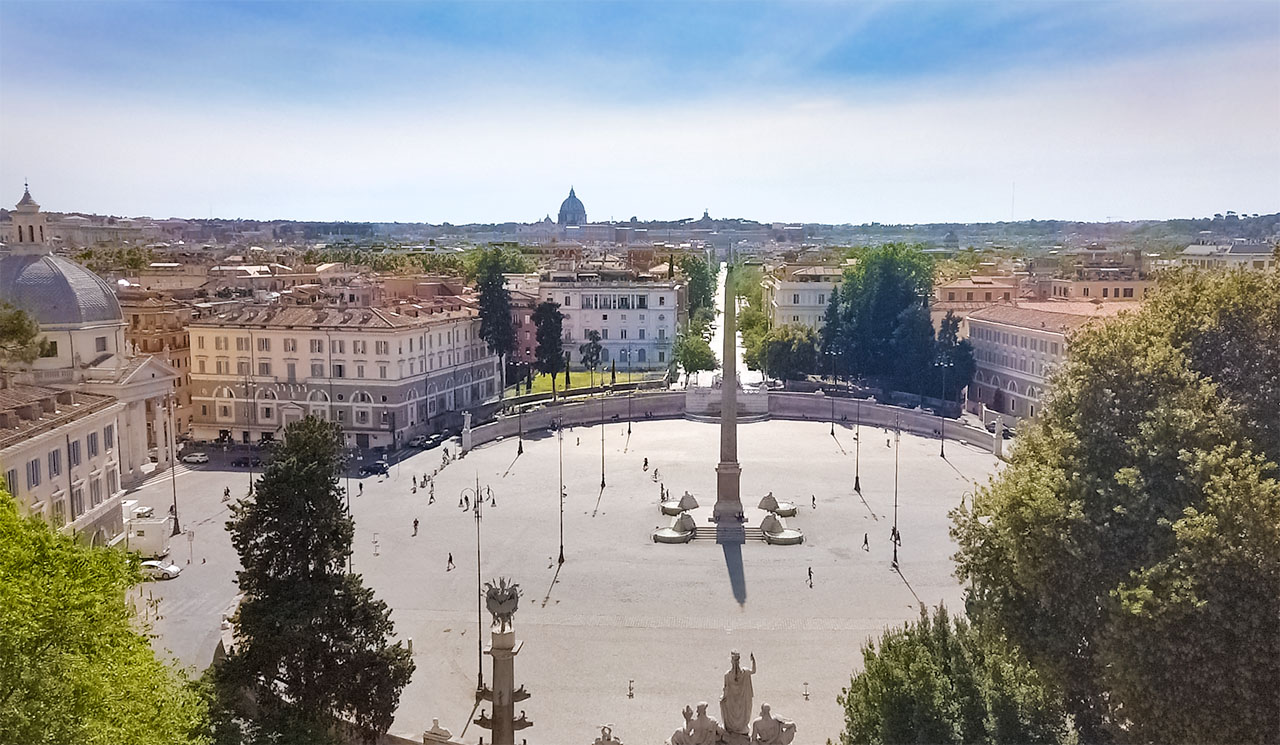
3. Aventine Hill and the Keyhole
Aventine Hill, one of Rome’s Seven Hills, is a quiet yet historically rich location that offers exceptional photographic opportunities. Known for its tranquil atmosphere, this hill is home to the Orange Garden (Giardino degli Aranci), a peaceful oasis with lush greenery and sweeping views of the Tiber River and St. Peter’s Basilica in the distance. The garden’s terraced walkways provide a serene setting for photos of Rome’s skyline, while the vibrant orange trees add a unique burst of color to your shots.
Historically, Aventine Hill is significant as it was once the home of ancient Roman aristocracy and, later, the location of the Basilica of Santa Sabina, one of the oldest Christian churches in Rome, dating back to the 5th century.
Just a short walk away from the garden, you’ll find the Aventine Keyhole at the Knights of Malta Gate. Looking through this famous keyhole, you’ll experience a unique and perfectly framed view of St. Peter’s Basilica, with the dome seemingly floating above the Roman rooftops. This optical illusion has made the keyhole one of the most photographed spots in Rome. Historically, the gate belonged to the Sovereign Military Order of Malta, and the carefully aligned view through the keyhole was designed to symbolize the importance of the order’s connection to the Vatican.
Together, these spots on Aventine Hill offer a combination of serene beauty and rich history, perfect for capturing both the essence of Rome and the hidden gems of its ancient past.
4. Via Margutta: The Artistic Street
Via Margutta is a charming and picturesque street in the heart of Rome, rich with artistic history and vibrant beauty. Located just a short walk from Piazza di Spagna, this quiet, cobbled lane is famous for its association with Rome’s artistic community.
The street’s roots go deep into the 19th century, and it became a hub for artists, writers, and creatives, including the renowned painter Giorgio de Chirico. Its ivy-covered facades, antique shops, art galleries, and quaint courtyards provide an ideal setting for capturing serene, timeless street scenes.
In addition to its artistic history, Via Margutta is famous for its appearance in the classic 1953 film Roman Holiday, where it served as the backdrop to several key moments in the movie. The Fountain of the Artists (Fontana degli Artisti), located at the intersection of Via Margutta and Via di Ripetta, adds an extra touch of romantic nostalgia. The fountain, adorned with a sculptural representation of a stylized artist’s palette, has long been a symbol of the street’s connection to Rome’s creative soul.
This charming street is perfect for capturing the essence of Rome’s artistic heritage, offering photos that blend historic ambiance with modern-day elegance. Whether you’re photographing the intricate architecture, the vibrant street life, or simply enjoying the soft Roman light filtering through the greenery, Via Margutta is an essential stop on any photography journey through the Eternal City.
5. The Roman Forum and Capitoline Hill Overlook
A highlight of RomeCabs’ Panoramic Rome tour is a stop on Capitoline Hill, offering one of the most captivating views of the Roman Forum. From this elevated vantage point, you can photograph the remains of ancient temples, basilicas, and triumphal arches that once stood at the heart of Roman public life.
Notable structures like the Temple of Saturn, Basilica of Maxentius, and Arch of Titus stand out against the backdrop of the surrounding city. This perspective allows you to capture the rich history and architectural splendor of ancient Rome in a single frame, making it an essential stop for any photographer.
If you’re exploring Rome in the afternoon or evening, you’ll be treated to the ruins of the Roman Forum bathed in a warm, golden glow as the day transitions to dusk. In the late afternoon, the light softens, casting long shadows that bring the ancient stones to life.
As evening falls, the site takes on a serene, almost mystical quality, with the ruins illuminated under the fading light. This is the perfect time to capture the timeless beauty of Roman architecture, where history and light come together in a dramatic yet peaceful harmony.
6. The Colosseum and Arch of Constantine
Colosseum Square offers one of the most iconic and photo-perfect views of ancient Rome. From this vantage point, you can capture the majesty of the Colosseum in all its grandeur, framed by the impressive Arch of Constantine. This monumental arch, built to commemorate Emperor Constantine’s victory in the Battle of Milvian Bridge, stands as a symbol of triumph and Roman engineering.
The juxtaposition of these two iconic landmarks— the Colosseum, the largest amphitheater ever built, and the Arch of Constantine, with its intricate reliefs and historical significance—creates an extraordinary photographic scene.
Whether bathed in the warm glow of sunrise or illuminated by the soft light of twilight, the combination of these ancient structures against the backdrop of Rome’s bustling modern life provides countless opportunities to capture the city’s unique blend of history and vitality.
Many of RomeCabs’ Rome tours by car, Rome Pre-Cruise Tours, Rome Excursions from Civitavecchia, and Rome Post-Cruise Tours from Civitavecchia include stops in Piazza del Colosseo (Colosseum Square) for amazing photo opportunities of the outside of the Colosseum and Arch of Constantine.
7. Ponte Sant’Angelo
Ponte Sant’Angelo, also known as the Bridge of Angels, is one of Rome’s most photogenic landmarks. Connecting the Castel Sant’Angelo (originally built as a mausoleum for Emperor Hadrian) to the city center, the bridge offers dramatic views of both the Tiber River and the imposing fortress.
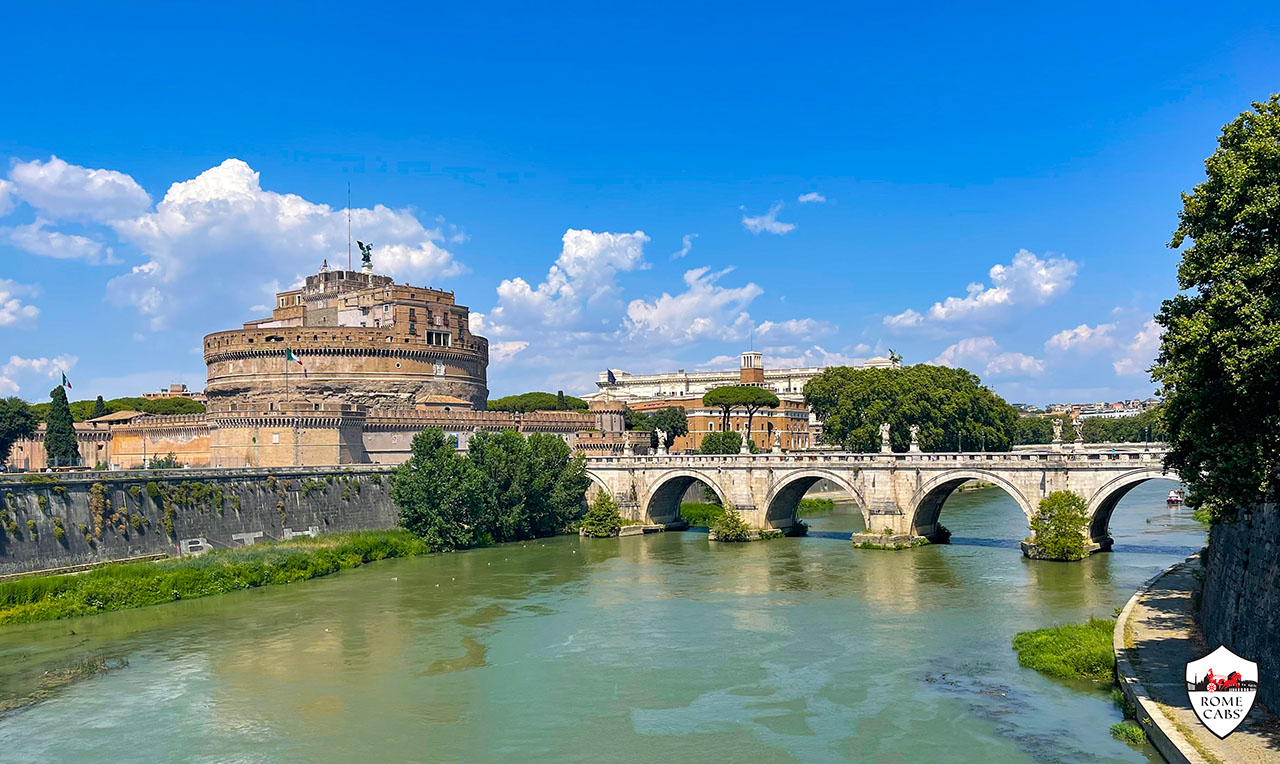
The bridge is flanked by ten baroque statues of angels, each holding a symbol of Christ’s Passion, created by the renowned sculptor Gian Lorenzo Bernini and his students. These statues, along with the picturesque vistas, make Ponte Sant’Angelo an ideal location for photographers looking to capture Rome’s rich history and artistic legacy.
At sunset, the warm glow of the fading light casts an enchanting aura over the scene, providing an opportunity to photograph both the delicate figures of the angels and the grandeur of Castel Sant’Angelo against the changing colors of the sky. Whether you’re shooting at dawn, dusk, or midday, the blend of baroque artistry and historic architecture will undoubtedly leave a lasting impression on your lens.
8. The Top of Vittorio Emanuele II Monument
The Vittorio Emanuele II Monument, often referred to as the Altar of the Fatherland, offers one of the most commanding views in Rome. Standing proudly in Piazza Venezia, the monument was constructed to honor King Victor Emmanuel II, the first king of unified Italy. Its massive marble structure and grandiose design are impossible to miss as you explore the city.
Take an elevator to the top terrace, where you’ll be rewarded with breathtaking panoramic views. From this height, you can capture sweeping vistas of some of Rome’s most iconic landmarks, including the Roman Forum, the Colosseum in the distance, and the ruins of Trajan’s Forum and Trajan’s Market.
The Trajan’s Column, towering over the surrounding area, stands as a testament to the emperor’s military victories. In the opposite direction, Piazza Venezia provides a modern contrast to the ancient surroundings, offering a striking juxtaposition in your photographs.
Whether during the golden hour or under the midday sun, the top of the Vittorio Emanuele II Monument provides an unparalleled view of Rome’s historic heart, where ancient ruins meet modern life.
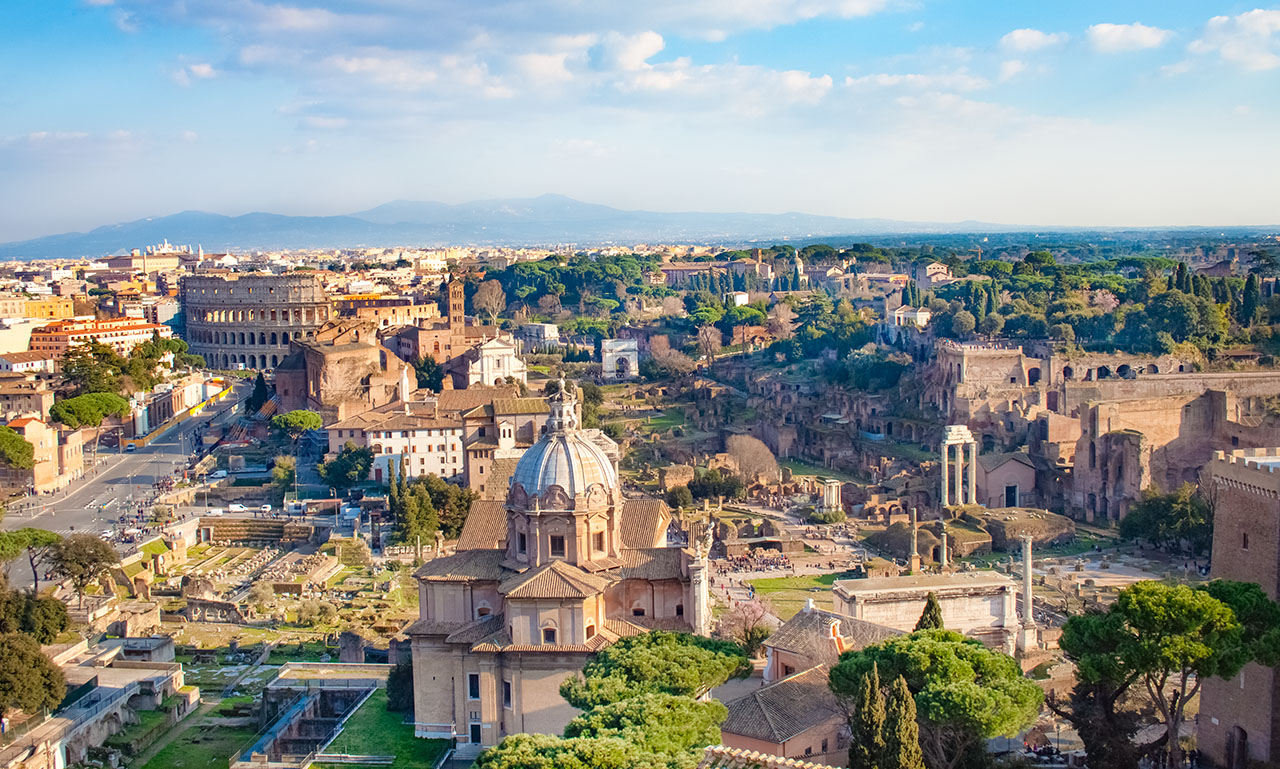
9. Trastevere and its Charming Streets
Trastevere is a picturesque neighborhood that embodies the essence of Rome’s timeless appeal. With its narrow cobblestone alleys, vibrantly painted buildings, and ivy-covered facades, Trastevere provides countless opportunities for capturing the authentic Roman experience. Once a working-class district, it has retained its old-world charm, making it a favorite among photographers.
Stroll through its quiet streets to discover hidden squares, bustling cafés, and colorful pizzerias. The area’s famous Piazza Santa Maria in Trastevere, home to the remarkable Basilica di Santa Maria, is a particularly popular spot, where the light often plays beautifully against the ancient stonework, creating striking contrasts for your photos.
As the day wanes, Trastevere takes on a magical atmosphere. The evening light, combined with the lively local scene, makes this area ideal for capturing both the tranquility of its historic corners and the vibrant life of its bars and restaurants. The neighborhood’s intimate, village-like feel—combined with its rich history—makes it a photographer’s haven in the heart of Rome.
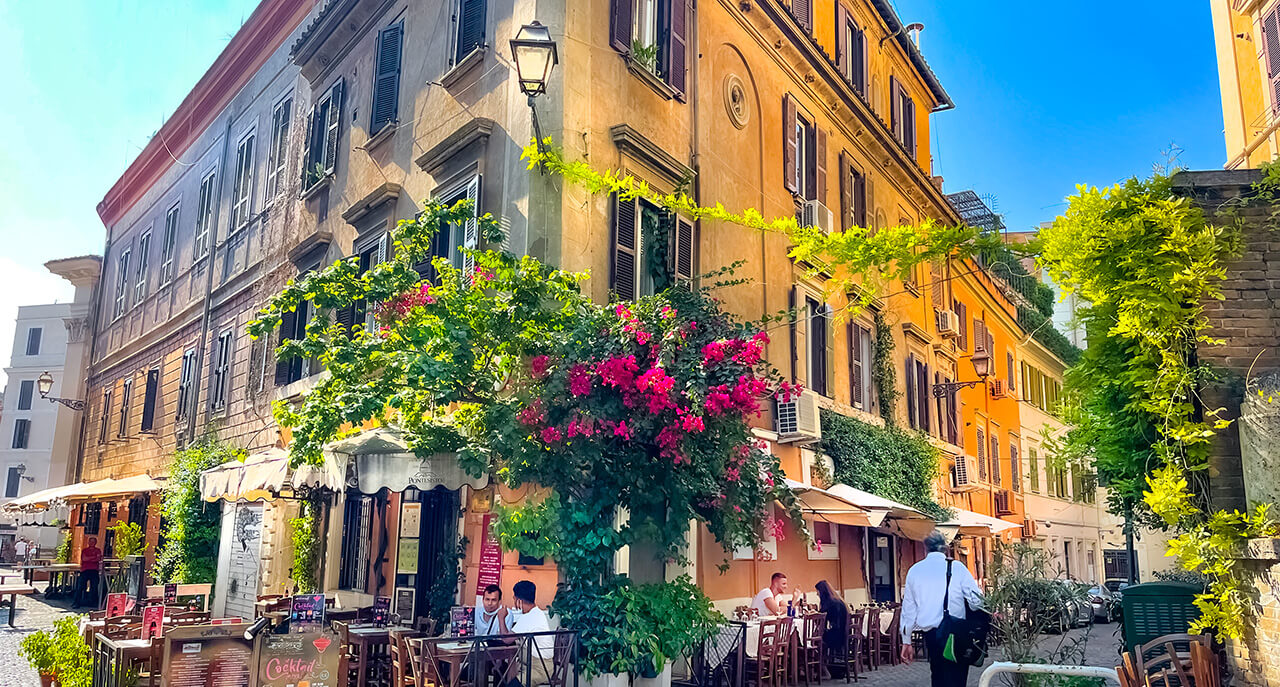
10. Appian Way (Via Appia Antica)
The Appian Way (Via Appia Antica) is one of the oldest and most important roads in ancient Rome, stretching from the heart of the city to the southern regions of Italy. Known as the “Queen of Roads,” this ancient route is flanked by well-preserved ruins, imposing Roman tombs, aqueducts, and countryside vistas that transport visitors back in time. The tranquil atmosphere of the Appian Way, with its stone-paved path and lush surroundings, offers a dramatic contrast to the bustling heart of Rome, making it a perfect location for photographers seeking to capture the serene beauty of ancient history intertwined with nature.
As you walk along the road, you’ll encounter centuries-old tombs of prominent Romans, including the Tomb of Cecilia Metella, as well as remnants of ancient Roman villas. The sight of rolling hills, combined with the grandeur of the structures from the past, offers countless opportunities for capturing the timeless beauty of Rome’s countryside.
Via Appia is also part of RomeCabs’ Along the Empire Roads Tour of Rome.
Rome is a city where every corner tells a story, and every view offers a new opportunity for capturing its timeless beauty. From the panoramic vistas atop Janiculum Hill to the artistic charm of Via Margutta, and the ancient grandeur of the Roman Forum, the Eternal City is filled with photographic gems.
With RomeCabs, you can experience the best of these locations, all while enjoying the convenience and comfort of a private tour. Whether you’re capturing the iconic landmarks or the hidden corners of Rome, each shot you take is a piece of history, a memory to treasure.
* Find RomeCabs online also on:
- RomeCabs FACEBOOK
- RomeCabs PINTEREST
- RomeCabs TWITTER
- RomeCabs INSTAGRAM
- RomeCabs FLICKR Photo Gallery
- RomeCabs Recommended on Cruise Critic
